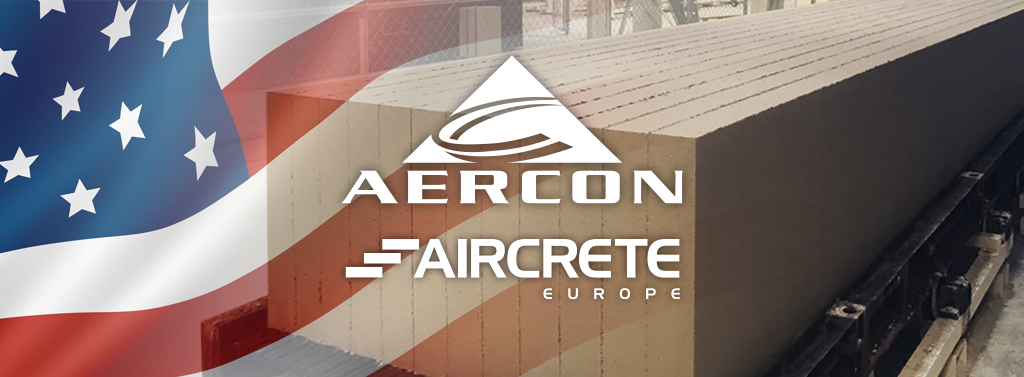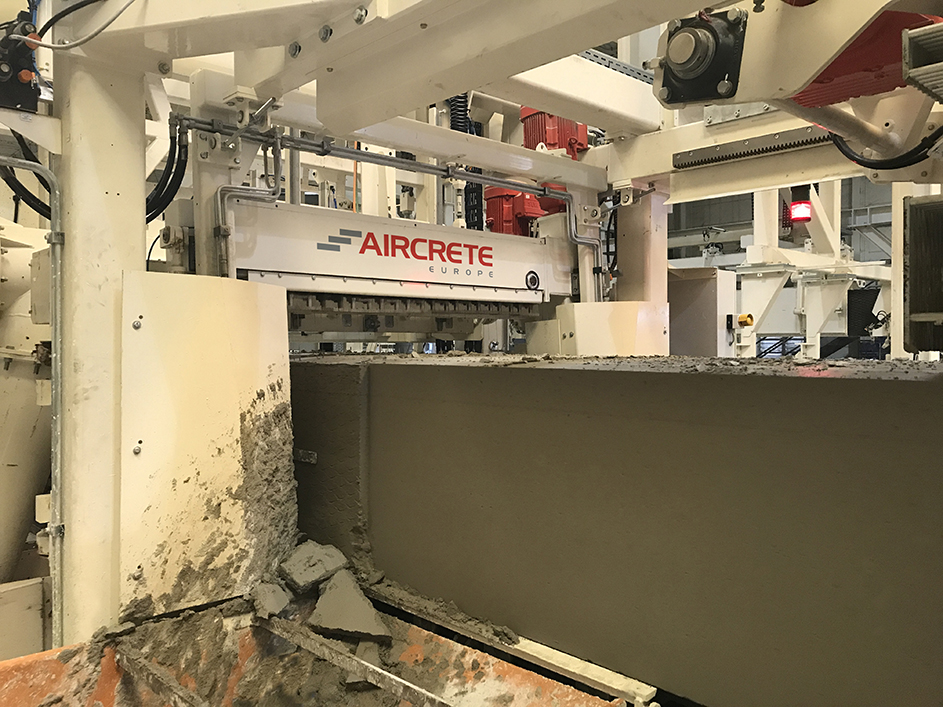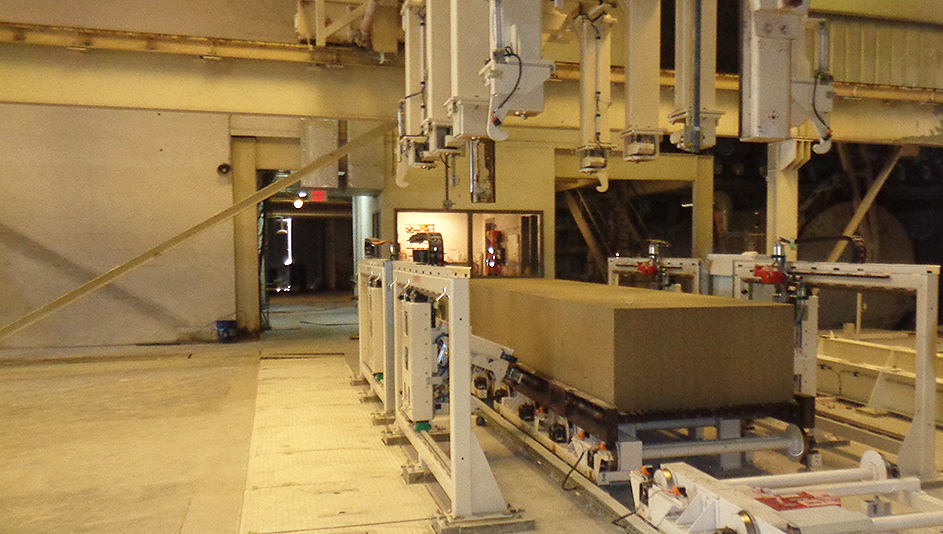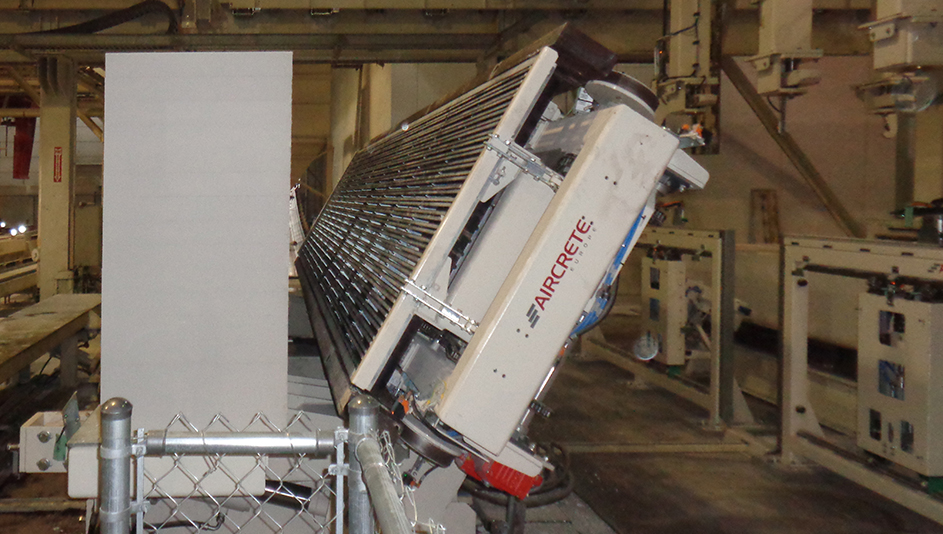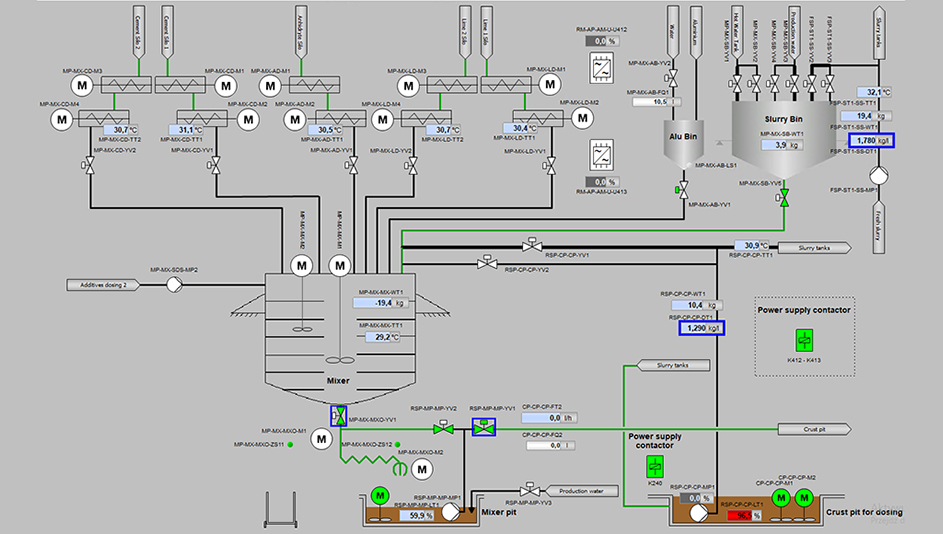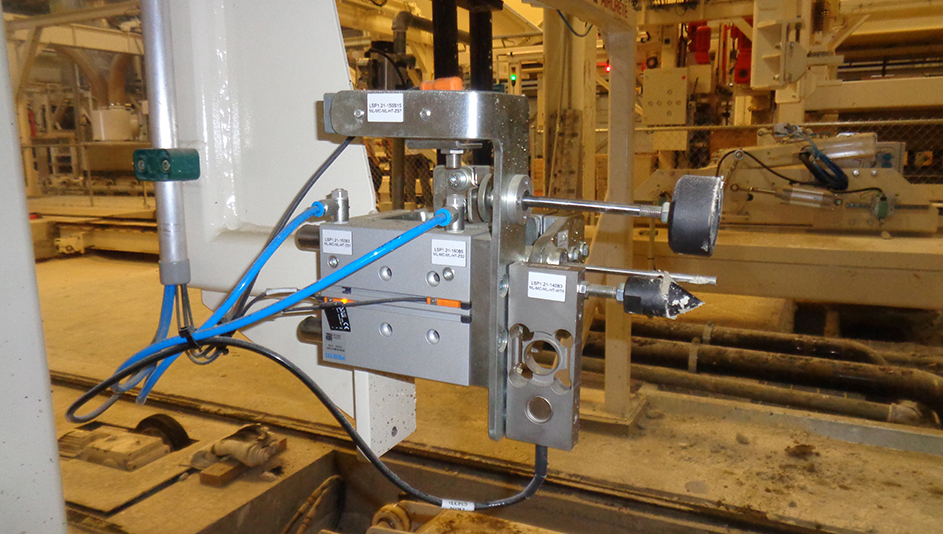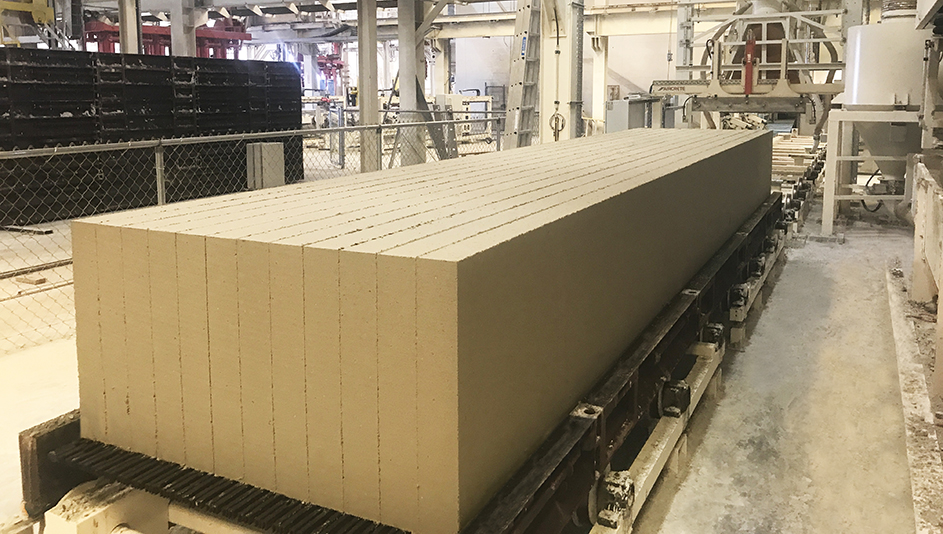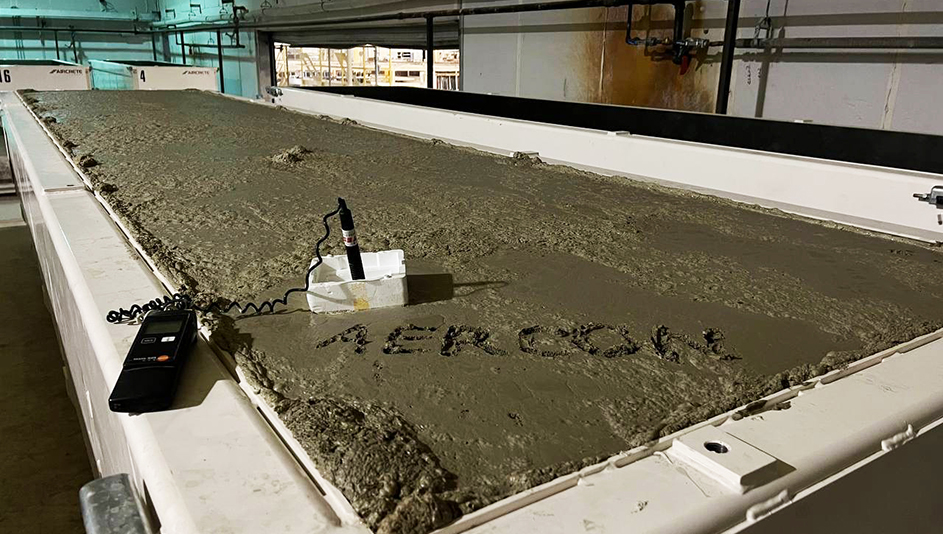AAC panels market in the USA
The construction market is one of the largest sectors in the United States with around USD 1.4 trillion worth of projects per year and providing employment to over 7 million people. The National Association of Home Builders in 2019 identified labor shortage as one of the main challenges the United States construction market is facing and this has been confirmed by numerous sources and experts. According to the Associated Builders and Contractors, the construction industry is impacted by workforce shortage of 650,000 in 2022. Modular prefab construction, which is globally gaining market share over traditional ways of construction, is seen as a major contributor to solving the labor scarcity issue. Besides the advantage of faster construction with less labor required, modular construction also has a positive contribution to other challenges in the market. It is an eco-friendly solution with less waste, it improves the on-site safety for workers, it is more cost-effective, less exposed to supply chain disruptions and quality-control is easier to perform. Adding Autoclaved Aerated Concrete (AAC) to the equation combines all these advantages with another solution to a major problem the construction market is struggling with – sustainability (Fig. 1).
Fig. 1: Building with AAC panels provides an integrated solution to address today’s large construction challenges
AAC has been gaining popularity for a long time in the United States, due to its green and sustainable characteristics which is increasingly important in today’s construction world. Within the AAC market in the United States, thinner lightweight AAC panels have enormous potential. They provide a complementary solution for the existing building system (i.e. steel or wood structure) with a lightweight, prefab concrete shell, contributing to higher insulation values and improved fire-proof safety at the same time. Steel/wood structure in combination with AAC panels are very popular in Australia and Japan, where it has already gained a massive market share in the local wall solution markets.
In the United States, this system is becoming extremely popular, and many projects have been realized already. The reinforced AAC panels have predominantly come until today from Mexico, where 2 factories with flat-cake cutting technology have been supplying the United States, but due to the cost of transport, most projects have been in or around the south of the United States with the majority in Texas. The relative high part of transport cost due to the large distance has simply prohibited the product from growing in line with its big potential. Nevertheless, projects have been realized as far as Colorado and Chicago, underlining the opportunity this product offers in the United States.
Since the beginning of 2022, Aercon is the only company in the United States to produce thin types of AAC panels. Aercon’s factory is located in Haines City, Florida, and has been recently modernized with a major upgrade project to replace the tilt-cake technology with the latest Aircrete flat-cake technology and production capacity expansion. The reason for this big modernization was that with the old tilt-cake technology, Aercon was predominantly producing AAC blocks and was unable to produce thinner panels (100mm thick or thinner) in a reliable and sustainable way, whereas this was where the market demand increasingly was coming from. To provide an answer to this market trend and to future-proof their production facility, Aercon engaged Aircrete Europe as their technology partner to upgrade their factory (Fig. 2).
Fig. 2: The main trends in the USA driving the need for Aircrete flat-cake technology
Joseph R. Graves, General Manager for Aercon Florida, LLC, commented: “For years, it has been quite frustrating to see the overwhelming potential for the AAC panel market here in the North America and not have a method to effectively and efficiently produce them. Given the increase in demand for AAC panels and a change in the dynamics for more economically and environmentally friendly building materials here in the United States, we at Aercon Florida, felt it our obligation to the customers and the environment to make the necessary changes to meet that demand. Prior to our Plant renovation, we were not equipped to cater to the demand of the market with our outdated tilt-cake cutting technology as efficiently and produce panels for a market which predominantly demands 50-100mm thick panels for partition walls and cladding applications. Now, with the installation of the latest Aircrete flat-cake technology and Aircrete 4.0 plant control system, it is our hopes to now benefit from the enormous growth opportunities and meet the demand of the market. With the introduction of new Aircrete Technology in our facility we will now be capable of producing panels in dimension that the market is demanding utilizing a more streamlined manufacturing approach. We will also be capable of producing AAC products with an exceptionally smooth surface, allowing us to sell a premium quality product, which will allow builders to save cost on-site due to minimal finishing requirement.”
Project scope
The main objective of the upgrade project was to replace the old tilt-cake cutting line with the latest Aircrete flat-cake technology (Fig. 3). As an integrated technology partner with a large track record of complex modernizations, Aircrete carefully analyzed the full plant layout to make a thorough assessment of how the production flow could be optimized and what other equipment had to be replaced. As for all modernization projects, Aircrete always tries to optimize the budget for the client by creatively analyzing what part of the old machinery can be re-used and/or refurbished and still fit into the new layout.
Fig. 3: Aircrete cutting line – vertical and horizontal cuts in action
Besides the completely new flat-cake cutting line, the mould logistics were upgraded to match the new plant layout. This included a full set of new casting moulds, automatic mould latching and unlatching, mould opening and closing as well as a new mould brushing and oiling system. The big advantage of the Aircrete mould, compared to the closed tilt-cake moulds, is that all four sides can open, therefore making the entire mould flat and allowing for very efficient cleaning and oiling, which is also extremely compact compared to the original machine.
Three existing manipulators were modified in Aercon to handle the curing frames and flat-cake autoclaving. Hereby the old tilting manipulator was converted to a frame handling manipulator, and the old platform manipulator was converted to a frame buffer manipulator. The biggest conversion was the old autoclave manipulator, which was modified with a new gripper to handle flat autoclaved cakes versus the tilted cakes (Fig. 4). The big advantage of flat/horizontal autoclaving in combination with flat-cake cutting, compared to the previously installed tilt-cake cutting system is that there is no bottom waste as well as no sticking during the autoclaving process.
Fig. 4: New curing frame manipulator and automatic stacking pin manipulator
Anticipating an acceleration in product demand, followed by the possibility to make thin AAC panels in the future, the capacity of the factory was also upgraded at the same time by commissioning the fourth autoclave including an additional buffer line. Due to the Aircrete flat-cake technology the existing white separator was not required anymore and was replaced by a special tilting table with u-profile fixing device, allowing the existing packaging system to be reused (Fig. 5).
Fig. 5: New tilting table for packaging purposes and automatic pin de-stacker on the right side
A new pin stacker and de-stacker were installed to increase the level of safety for the operators and to ensure an effective and safe handling of the curing frames throughout the plant. Of course, a full set of new curing frames with the appropriate conveyors and brushing and oiling system was also supplied.
In addition, a programmable pattern milling CNC machine was installed in the after-treatment area to be able to produce AAC panels with all types of patterns. A solution very popular for cladding applications as it provides the AAC panels with esthetical and premium appearances.
Furthermore, with respect to the plant control, the old and obsolete Siemens S5 control system was replaced with a state-of-the-art Siemens S7-1500 control system with a new advanced SCADA visualization to substantially improve the human-machine-interfacing and ease of operation. With the new Aircrete batching and dosing software, including advanced recipe control, and new autoclave control software, the process and quality control of the plant have been significantly improved (Fig. 6).
Fig. 6: Mixing plant process visualization screen example
As for all modernization projects, it is critical to keep factory downtime to a minimum to reduce the production loss for the client. To support this, Aircrete makes use of special tools in the preparation phase. For the Aercon upgrade project, Aircrete converted the existing plant into its engineering software, using a 3D Plant Scanner that generates a high-density point-cloud model, combined with the engineered Aircrete equipment. Integrating BIM in this project made possible to identify possible clashes early in the project and to create a visual installation sequence and planning, which assisted discussions on installation logistics and installation process overall. This approach has proven to be effective in other modernization projects of Aircrete as well (Fig. 7).
Fig. 7: Utilizing point-cloud technology allowed for smooth projection of new equipment in the existing facility (on the left side – implemented, on the right side – during design phase)
Rick Zegger, Project Manager at Aircrete Europe, commented: “Part of making this project a success was not only focusing on the Aircrete solution, but finding the optimal balance between installing the new equipment and reusing/refurbishing old equipment. In addition, the full commitment of the Aercon employees to cooperate with all stakeholders and understand how to operate the new equipment and the new production layout was instrumental. Long before the dismantling of old equipment and installation and commissioning of the new equipment, Aircrete was continuously onsite at Aercon to improve on-going activities, indicate bottlenecks in the non-modernized equipment that would affect reliability and to ensure that the new, shorter production cycle times would be met. This also resulted in a clear plan how to improve the non-modernized equipment during the plant modification. When the modification started, replacement parts were on site and manpower and tasks were properly allocated. During the installation the Aercon personnel were heavily involved in the process to already get familiar with the new equipment. During the commissioning, the training started, and software customizations were incorporated to fully tailor to the demands of the customer. This thorough preparation and great cooperation made Aercon hit the ground running from the day the factory was restarted again.”
Aircrete flat-cake cutting technology
The Aircrete solution is based on a flat-cake cutting technology. Being the only flat-cake player on the market with own AAC production factories, Aircrete is well ahead of the competition in terms of technological advancements regarding AAC panel production. Compared to tilt-cake cutting technology, the flat-cake technology has a number of clear advantages, particularly visible when it comes to the high-volume and sustainable production of AAC panels of 100mm thickness or thinner. In the Aircrete flat-cake system the cake handling is minimized, which is very important, as the product is sensitive in the so-called green stage and directly after autoclaving. The less handling is required the less risk of the product damage and with that less requirement for sorting, and large reduction of white waste.
When the rising of the green cake is finished and the green cake is ready to be cut, the Aircrete mould is transported from the rising area to the cutting line area. Cake hardness and temperature are being measured automatically (Fig. 8). As the cake needs to be put on the cutting line by the grabbing manipulator, the cake is harder (than with tilt-cake cutting) and therefore stronger. This creates additional side benefits, like less damage of corners, and results in higher quality surfaces. Another very important advantage is that the cutting line is designed to cut harder cakes, with all wires being able to oscillate. This allows for a much larger cast-to-cut-window, making the risk of cakes going too hard to cut much lower. In addition, less time is lost when changing between products of different densities.
Fig. 8: Automatic green cake hardness and temperature measurement
The grabbing manipulator lifts and, if profiling is included, holds the cake over the open mould while the bottom profiling unit makes chosen profiles on the bottom of the cake. The green rest material is collected in a bin and disposed to the slurry pit for re-use, resulting in zero green waste during the production process. In the meantime, a ready-oiled curing frame, complete with U-profiles/slats and side channels, is transported into section I of the cutting machine on driven rollers.
Section I of the cutting machine is hydraulically lifted and the grooved rollers together with the cleaning roller lift the u-profiles/slats clear of the curing frame, ready to accept the green cake. The grabbing manipulator gently positions the green cake on this raised assembly of u-profiles/slats. Thereafter, the cakes remain on these u-profiles/slats until the unloading line, minimizing the amount of handling to green cake and highly reducing the risk of damage. The grabbing manipulator is equipped with level compensation to ensure that also shorter cakes are horizontally positioned when placing them onto the section I. As a first step, the cross-cut takes place, determining the block height or panel length. All cross-cut wires oscillate back and forth. The wire oscillation ‘stroke’ is adjustable to an extent. The wires are held by air-tensioned holders on precision grooved segments, which are equipped with wire-break detection and Aircrete-Wire-Assist. The cross cutter is characterized by an inclined frame with oscillating wires. By creating an inclined cross-cut, the wires leave the cake at an angle, thereby minimizing the slingshot effect and damage to the cake caused by it (resulting in an optimal top crust removal process). In addition, the thickness of the top crust can also be reduced, allowing for savings of raw materials and less energy consumption required.
The pusher (part of the cutting machine) now moves the cake from section I to section II, whereby the u-profiles/slats roll over the non-driven grooved rollers. Hereby the cake is pushed through the horizontal and vertical cutting wires. The horizontal wire is pneumatically tensioned and is oscillating during the cutting and cuts the block length or panel width. The horizontal wire can be hung anywhere in the height between 440mm and 630 mm. The vertical cutter cuts the thickness dimension – for example 15 rows of 100 mm AAC panels from the 1500mm wide cake. Vertical wires are located in the High Speed Cutting Frame (HSCF), a unique device that oscillates at high speed (10-30 Hz) with two wires per cut, to give products a super smooth surface and extra accuracy. The wire holders of the HSCF are equipped with wire-break detection and Aircrete-Wire-Assist. The top of the cake can be profiled down its length by adjustable knives as the cake travels.
The outermost vertical wires remove the green cake side waste, leaving a smooth surface. This green waste is guided into waste chutes and washed through a gully into the crust slurry pit situated beneath the vacuum manipulator. In case AAC panels/blocks are produced that leave a large side crust (e.g. 200mm blocks leave a 100mm row of 6m blocks over), Aircrete has a special automatic solution (as an option) to remove such large green waste layer automatically. When the cake reaches section II the cutting is complete. The horizontal and vertical wires are “caught” by the special pusher package and therefore damage is prevented to the product due to wire-pull-out. The pusher then retracts and the u-profiles/slats bearing the cake are lowered to again to sit on an empty curing frame (Fig. 9).
Fig. 9: Fully-cut green cake with 100mm thick products before crumb-suction hood
The curing frame with cake is rolled into the next station by driven rollers, which is under the vacuum manipulator, whose function is to remove the top and both end-crusts. At the same time, the empty curing frame that was left in section I is transferred to section II to receive the u-profiles/slats with cake of the next cycle. The vacuum hood is gently lowered into contact with the top of the cake, an electric fan is started to create a partial vacuum to dislodge the crust. The hood is raised, with the crust still in contact, the fan running. At the same time, the needle-bed on either side of the cake removes the end waste. One end-crust removal system has an extended drive mechanism to remove the end crust of short cakes. The vacuum manipulator is then driven away sideways from the cake, with the waste, and stops over the crust pit. At this point the needle-bed retracts thereby dropping the end-crusts into the crust pit and power to the fan is stopped, thereby dropping the top waste into the pit as well. Powerful agitators break up the waste into return slurry. A crumb suction hood removes any crumbs that remain on the cake.
An important characteristic of this process is that through the flat cutting orientation all the cuts remain open after cutting and therefore there is no risk of sticking occurring. In addition, these open gaps will ensure a better and more efficient autoclaving process.
Once the cutting process is complete, the curing frame with cake is rolled to the stacker. Stacking pins, which are placed automatically to ensure optimal operator safety and efficiency, are used to support one cake on another as a spacer between the frames. The stacker puts three curing frames with cake on top of each other before transporting to the autoclave as a next step in the production process.
Project preparation and implementation
With an impressive track-record of designing and implementing complex modernization projects, Aircrete Europe understands that thorough planning and coordination between all stakeholder’s teams is fundamental to ensure a smooth installation with minimized downtime and production process disruption. During the entire engineering and manufacturing phases, all teams intensively worked together to ensure the most efficient dismantling process of old equipment, the necessary civil works to adjust the foundations and the installation and commissioning of the new Aircrete equipment. Clear scope divisions and responsibilities were the basis of this successfully executed project, and, being a technology partner and not just a machine supplier, Aircrete ensured an extra team stayed on site after project completion to ensure a smooth ramp up of production and provide production process and planning support with respect to producing the AAC panels.
Ready for the future
The future of construction lies in green, sustainable and modular building solutions. With a modernized factory and being the first factory in the United States with Aircrete flat-cake technology, Aercon is ready to participate in this trend and the future looks bright. Besides the AAC panels from Mexico that have been serving the local market demand, the United States now have their own local source for the wide portfolio of high-quality AAC panels, an instrumental step to accelerated market growth in the short-term future (Fig. 10).
Fig. 10: “First cake” produced being carefully monitored during rising process

